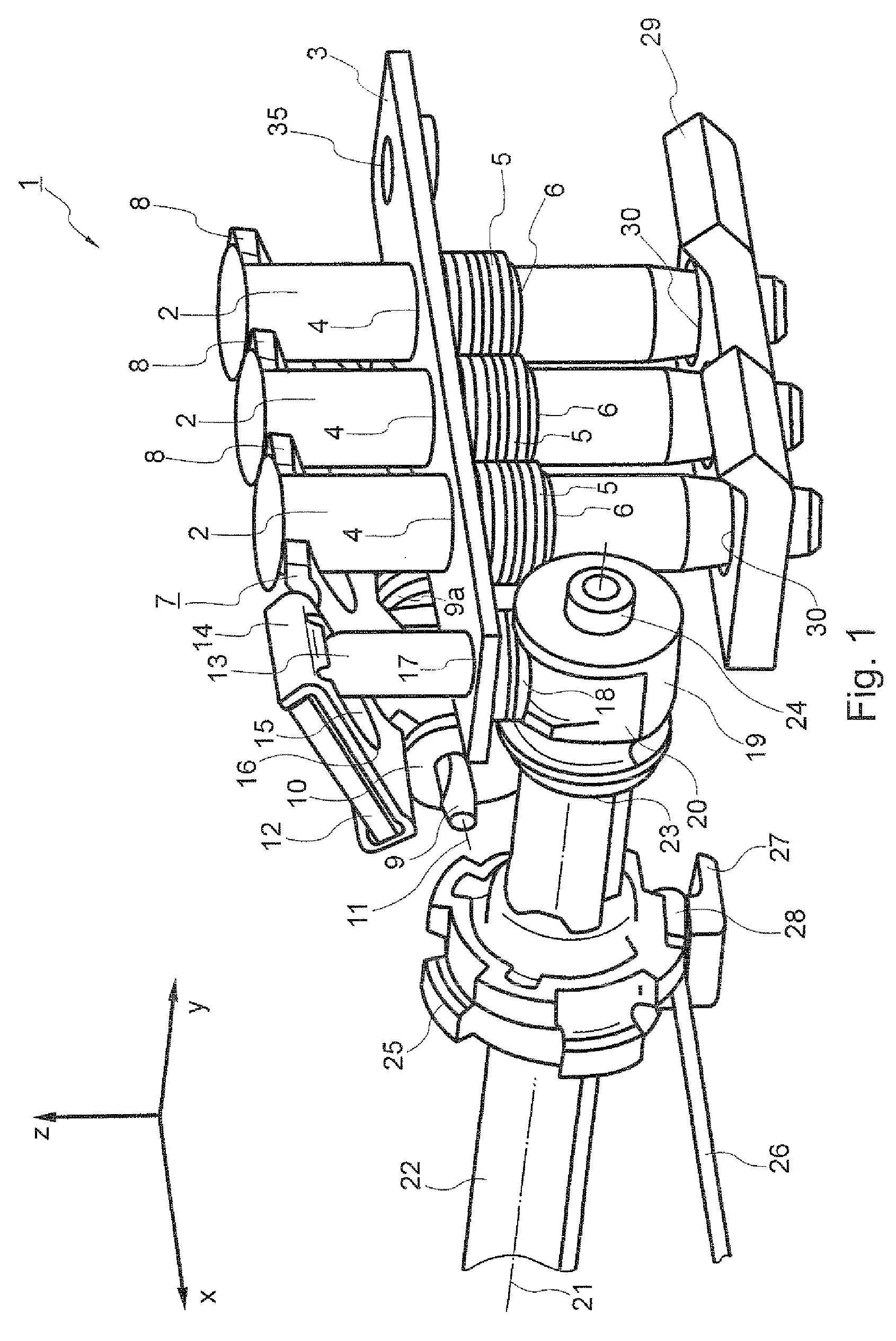Locking device for a rail adjustment system
a locking device and adjustment system technology, applied in the direction of furniture parts, machine supports, other domestic objects, etc., can solve the problems of limited design freedom for the geometry configuration of the lower side of the seat, inconvenient installation, and inconvenient installation, so as to improve the effect of cost-effectiveness
- Summary
- Abstract
- Description
- Claims
- Application Information
AI Technical Summary
Benefits of technology
Problems solved by technology
Method used
Image
Examples
Embodiment Construction
[0032]Mutually corresponding parts are provided with the same reference numbers in all of the figures.
[0033]FIGS. 1 and 2 illustrate the locking device 1 in a laterally perspective view in an unlocked or in a locked state. The locking device 1 comprises three locking bolts 2 which are arranged one behind another and can be lowered in a vertical direction (inverse z direction) from an unlocked position (FIG. 1) into a locked position (FIG. 2). The locking bolts 2 pass through a supporting plate 3 and the upper rail of a rail adjustment system, on which the supporting plate 3 rests (compare FIGS. 5, 6), in bores 4 designed for this purpose. By means of prestressable spring elements, which engage around the locking bolts 2 and bear on the upper end side against the supporting plate 3 (compare FIGS. 3 and 4) and are clamped on the lower end side in a groove 6 of a respective locking bolt 2, a resetting force in the locking direction (inverse z direction) is built up on the locking bolts...
PUM
 Login to View More
Login to View More Abstract
Description
Claims
Application Information
 Login to View More
Login to View More - R&D
- Intellectual Property
- Life Sciences
- Materials
- Tech Scout
- Unparalleled Data Quality
- Higher Quality Content
- 60% Fewer Hallucinations
Browse by: Latest US Patents, China's latest patents, Technical Efficacy Thesaurus, Application Domain, Technology Topic, Popular Technical Reports.
© 2025 PatSnap. All rights reserved.Legal|Privacy policy|Modern Slavery Act Transparency Statement|Sitemap|About US| Contact US: help@patsnap.com



